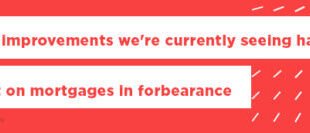
Last week, we pulled together six common mortgage-related terms and phrases that potential homeowners might be spooked by. Have no fear; this week, we dig up another half-dozen!
6 more not-so-scary mortgage terms you should know
1 — Credit Report & Credit Score
To understand your creditworthiness (how risky it is to let you borrow money), mortgage companies will dig into your credit. The credit report collects information on all the loans you’ve ever had, your payment history, and how much credit you have been approved for, even if you’re not currently using it. The credit score is a numerical value (ranging from 300 – 850 points) that lenders look at to guesstimate how likely you’ll be to make mortgage payments on time. Learn more about why it’s smart to maintain a good credit score.
2 — Equity
Also known as “home equity,” this is the financial stake you, as a homeowner, have in owning your home. It’s calculated by subtracting the amount still outstanding on the mortgage from the property’s current market value. Note that home equity can change over time as you make monthly mortgage payments or bring the principal down by making lump-sum payments. It can also vary due to market conditions and the sales of neighboring properties. Get the basics on the importance of home equity.
3 — Loan Pre-approval
You might think that a mortgage pre-approval and a pre-qualification are the same thing, but don’t be fooled. Both are indications of your ability to get a mortgage, but a pre-approval is much more detailed — and more of a guarantee to a potential seller that any offer you make is legit. Mortgage pre-qualification is a less formal estimate of how much you may be able to borrow based on what you tell a lender about your income and debt. On the other hand, an underwritten pre-approval means the lender has reviewed your credit history and financial information and has issued preliminary approval for a specific dollar amount. Learn more about the differences between being pre-qualified and being pre-approved.
4 — Origination Fee
Loan origination is another way to say “creating a loan.” It’s a multi-step process that taps into several different departments at the lender’s office, beginning when you apply for a loan and submit the financial docs necessary for an underwriter to evaluate whether to loan you the money. The process ends at closing. That’s when you’ll pay the origination fee to cover all the steps in the mortgage process and your home loan gets entirely funded. Learn more about mortgage origination fees.
5 — Rate Lock
Mortgage interest rates can change daily — even several times a day — and you want to lock-in a good rate when you can. A rate lock on a mortgage loan means that the interest rate quoted to you by your lender won’t change between the offer and the closing, as long as there are no changes to your application throughout the process and that you can close within a specific time frame. Rate locks are typically available for 30 to 60 days, and sometimes longer with a fee. Learn all about mortgage rate locks.
6 — Underwriting
You applied for a home loan. Great. But before your mortgage company decides whether or not to approve your application, your mortgage loan officer will collect a variety of financial documents from you (proof of income, prior tax documents, etc.) and hand them to the underwriter. He or she is the person who then verifies your identification, checks your credit history, and assesses your financial situation. This process — underwriting — considers the risk of lending money to you and determines whether to trust if you will be able to pay back a home loan. If the answer is ‘yes,’ the underwriter will approve your application. Learn even more on mortgage underwriting.
Don’t fear scary home loan jargon
The best way to get over your fears of mortgage acronyms and abbreviations and words you don’t know is to ask a mortgage professional in your area. We’ve got plenty of loan officers throughout the country who can show you that understanding home loan lingo is easy and nothing to be scared about.
Meanwhile, check out our 11 step home buying checklist to get organized, know what to expect and make the entire home buying experience more manageable.



